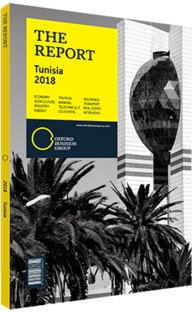Shaping into success: Habib Ben Hadj Kouider, Director-General, Banque Nationale Agricole (BNA), on restructuring policies

What are the main challenges associated with the recapitalisation and restructuring of public banks?
KOUIDER: To develop and strengthen the public financial sector, in 2013 the Banque Centrale de Tunisie (BCT) launched a restructuring programme targeting three public banks. The main challenges involve meeting the objectives of the programme in terms of ratios, financial indicators, risk management, and compliance with national and international standards. In particular, we are working on maintaining a good financial position in terms of credits and deposits, while modernising the bank. Regarding recapitalisation, the most important indicator is the solvency ratio, which we are working on improving, along with increasing equity capital.
Starting in 2014 BNA underwent a complete audit to identify the main deficiencies in order to redirect itself towards sustainable growth. A business plan approved by both the BCT and the Ministry of Finance was subsequently adopted, and 2016 marked the first year of the bank’s transformation. We have since then outperformed all the key performance indicators that were integrated in the convention between the state and the board of the bank. As of November 2017 we resolved the problem of solvency ratio and also returned to normal levels of recovery rates. We restructured the bank, adding independent administrators to our board of directors in accordance to international banking standards. Finally, we also separated functions such as commerce and risk into different branches of the bank. Although the restructuring plan is well on track, it will take time to see the results of the reforms in the banking sector and on the economy as a whole. How can de-cashing strategies be successfully implemented in the Tunisian market?
KOUIDER: Tunisia has a significant amount of outstanding cash, and having large amounts of money that never reach banks hinders liquidity. Reducing cash circulation is a priority not only for the banking sector, but also for the government and the country in general, which aim to tackle the overbearing parallel market.
In order for a de-cashing strategy to succeed the central bank needs to implement a series of reforms, such as limiting the number of commercial transactions that can be completed in cash, while requiring the rest of the transactions to be cashless. Additionally, existing means of electronic payments, such as credit cards and mobile payment methods, need to be optimised. The implementation of a de-cashing strategy, therefore, not only involves the administration and banks, but also technical operators and financial technology companies. Moreover, for innovative cashless methods to succeed, they need to be secured, and both financial institutions and consumers need to be protected from fraud and cybercrime. For example, a guarantee fund could be set up to cover the financial risk of digital payments. De-cashing is a necessary strategy for Tunisia that will promote new economic opportunities in the country, particularly in the domain of e-commerce. What new models of financing have the most potential for boosting agricultural value chains in Tunisia?
KOUIDER: The sectors that have influenced the commercial balance sheet the most in recent years are agriculture and agro-industry. Although the BNA has been financing the agriculture sector since its creation, financial innovation is necessary to meet the needs of modern agricultural value chains. We are currently working on giving access to credit to smaller farmers who have traditionally been excluded from classic banking. These new agricultural frameworks require a solid production flux and such models have been launched. We are appealing to international financial backers to increase capital to fund more small farmers and these appeals are garnering interest. It is crucial for Tunisian banking to finance agriculture, which contributes significantly to regional development and to the promotion of environmentally friendly practices.
You have reached the limit of premium articles you can view for free.
Choose from the options below to purchase print or digital editions of our Reports. You can also purchase a website subscription giving you unlimited access to all of our Reports online for 12 months.
If you have already purchased this Report or have a website subscription, please login to continue.

